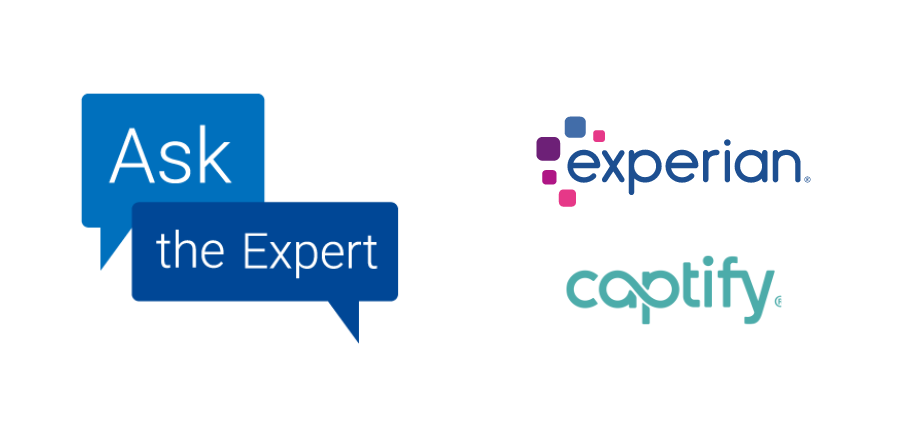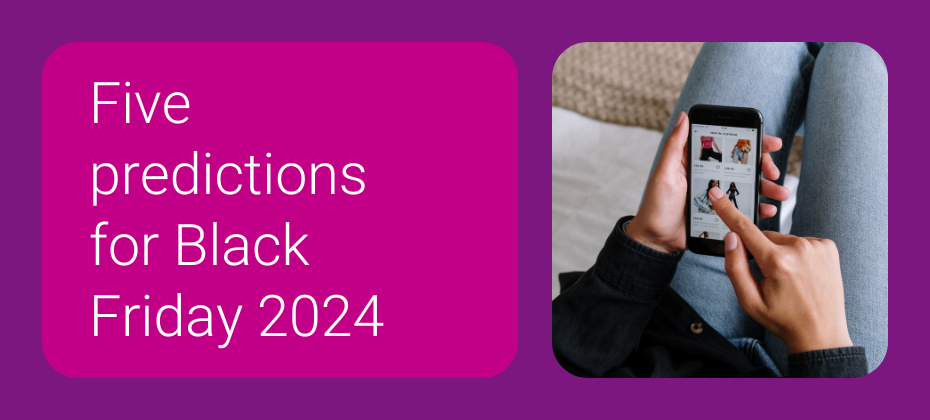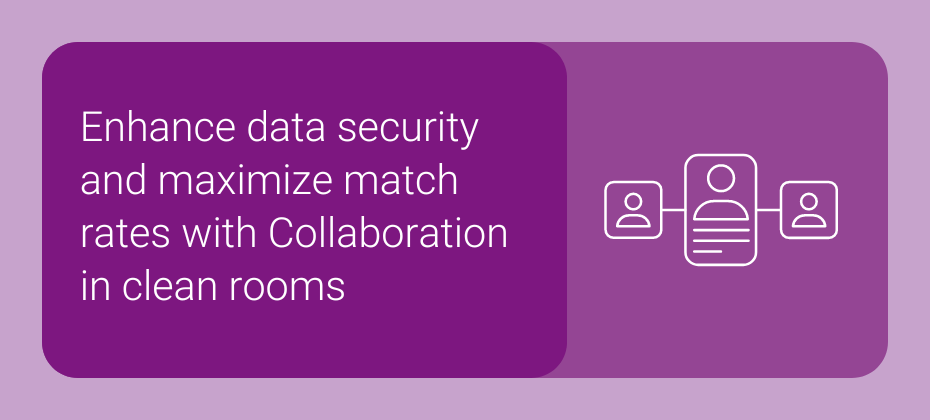
Digital advertising experienced a transformative shift in 2023, with retail media networks emerging as a focal point for advertisers seeking precision and efficacy. These networks defined how brands connect with consumers, utilizing the unique environment of digital storefronts to deliver targeted and personalized advertisements. Below, we’ll discuss the diverse landscape of retail media networks, examples of these platforms, and how Experian is at the forefront of empowering advertisers within this evolving marketing ecosystem.
What are retail media networks?
A retail media network (RMN) is an advertising platform retailers use in their digital storefronts or online platforms. It lets brands and advertisers promote their products or services directly within the retail environment where consumers make purchasing decisions. Unlike traditional advertising channels, RMNs use the retailer’s first-party data to offer targeted and personalized advertising experiences.
How important is it to advertise with RMNs?
RMNs offer advertisers a unique advantage — a rich set of first-party data on consumers, both on and off the platform. On-platform data includes user engagement insights, demographic information, and behavioral patterns. RMNs offer off-platform first-party data, such as cross-channel integration and CRM data integration. This data is especially important as the industry sees a shift away from the reliance on third-party cookies.
One of the key challenges brands face is the lack of tracking abilities through the customer journey. However, the closed-loop measurement and attribution capabilities within RMNs help advertisers track the entire consumer journey, linking campaign spend directly to final sales and in-store purchases. The precision and accountability offered by RMNs make them a crucial strategy in the ever-evolving world of digital advertising.
Trends with big RMNs
Here is a list of retail media networks and their performance in 2023. The information below offers insights into their reach and effectiveness in driving sales and brand visibility.
Amazon
According to Pacvue’s Q4 guide, Amazon Media Network experienced a year-over-year decline in its daily spend. However, a notable quarterly increase of 3.2% suggests a recent expansion in this ad type. The current average CPC for Amazon-sponsored products is $1.21, marking a substantial 7.1% year-over-year increase. Return on ad spend (ROAS) showed a 1.5% year-over-year decrease but increased by 6.1% quarter-over-quarter, potentially caused by more efficient campaigns. The beauty category showed a particularly strong performance with a remarkable 69.4% year-over-year increase.
Walmart
Walmart’s advertising revenues are surging at a rate twice that of Amazon, according to the Pacvue Q4 report. This quarter, the Walmart Media Network experienced a substantial 40% boost in ROAS, now at $6.93. This advancement can be attributed to strategic adjustments in the algorithm and bid rules and the incorporation of new bid features. Walmart’s CPC also witnessed a noteworthy 18.3% year-over-year decrease and a 14.5% year-over-year surge in average ad spend. Walmart’s growth trajectory emphasizes the shift in consumer behavior toward product discovery, as many consumers research products on the website before purchasing.
Kroger
Kroger developed an advanced retail media network that launched in October 2023. Their platform offers advertisers a more streamlined way to activate, measure, and optimize their campaigns, leading to improved advertising performance. The self-serve advertising platform lets advertisers promote products across the Kroger family of brands. Kroger is the biggest grocery chain in the country with a strong first-party shopper data set, providing more advanced audience targeting than many other grocery RMNs.
Target
Target launched its retail media network, Roundel, in 2016 to enhance the connection between brands and guests through curated media experiences. Roundel uses Target’s rich insights to create personalized advertising campaigns, reaching guests across several platforms and premium publishers. Over the past two years, Roundel has experienced over 60% growth, delivering over one billion in value for Target in 2021 and 2022. With a team of over 500 members, the platform differentiates itself by offering easy-to-use advertising solutions to brands of all sizes. Target plans to launch Roundel Media Studio, a self-service buying tool, in early 2024.
Marriott
In partnership with Yahoo, Marriott has created a travel media network that lets advertisers target consumers based on the hotel chain’s guest data. This collaboration allows ads to be strategically placed on various platforms, including the hotel’s websites. Marriott Media Network’s rollout will start on mobile platforms similar to traditional RMNs. Over time, it will extend to include ad placements on TV screens in guest rooms, Wi-Fi portals, and various digital screens in other areas, like lobbies and bars. This innovative approach in the hotel industry offers marketers diverse opportunities to reach their target audience.
Nordstrom
Nordstrom Media Network has shown considerable success, generating over $40 million in revenue and collaborating with several brand partners. Introduced in 2019, this network initially experimented with off-site campaigns and later expanded to on-site sponsored ads in 2021. Nordstrom Media Network offers data from 32 million customers and digital properties with nearly two billion annual visits. The network’s focus on personalizing the customer experience helps it stand out in the competitive retail media space and makes it a valuable player in the evolving digital advertising landscape.
CVS
With CVS Media Exchange, advertisers have access to a data set of 74+ million customers. This platform creates tailored campaigns for companies, helping their ads reach customers at the most critical points in their shopping journey. With options like display, video, audio, social, and in-store ad options, advertisers are seeing increases in product purchases and brand awareness.
Instacart
Instacart has a retail media network through its own platform and a tool called Carrot Ads, which helps grocery store chains develop RMNs through Instacart. It has a network of over 1,400 retail brands, helping advertisers reach their target audience. Advertisers have access to insights and automation to create relevant ads and track their progress.
Companies like Sprouts are using Carrot Ads to create and grow their own RMNs. Together, Instacart and Sprouts offer brands a unique opportunity by facilitating targeted online campaigns on Sprouts’ website. This collaboration provides access to metrics like sales and ROAS, offering a comprehensive view of campaign performance.
DoorDash
DoorDash offers a comprehensive suite of advertising tools for restaurants and brands to expand their reach on the DoorDash marketplace. This flexible advertising platform extends across diverse categories, like restaurants, grocery, convenience, alcohol, and more. The platform has demonstrated success with an average return on ad spend of 4.1x from sponsored product campaigns and an average of 70% new-to-brand customers.
Reasons behind these trends
The surge in advertising trends within RMNs can be attributed to several critical factors, including the following:
Rising retail media competition
The competitive landscape within the retail world has intensified, with major players competing for a larger share of the advertising pie within their respective RMNs. This surge in competition among retailers like Lowe’s One Roof, Sprouts, 84.51, and Albertson’s Media Collective has led to a continual evolution of features and capabilities. Advertisers benefit from this competitive spirit because it drives innovation and offers enhanced tools and opportunities to refine their advertising strategies. The competitive edge creates an environment where RMNs continually improve and adapt to meet the needs of both advertisers and consumers.
Third-party cookie deprecation
Major web browsers are getting rid of third-party cookies, so advertisers must reevaluate their targeting and tracking strategies. Because of this, the first-party stronghold of RMNs is particularly valuable. Advertisers can rely on their reservoir of first-party data with RMNs to maintain effective audience targeting and measurement capabilities. The emphasis on first-party data aligns with advertisers’ needs in the post-cookie era, making RMNs crucial partners in the pursuit of effective and privacy-conscious advertising solutions.
Crafting your RMN ad strategy
Crafting an effective RMN ad strategy is a multifaceted process that involves careful planning. You start with clean, scaled, and scoped data, then everything waterfalls from there. When done correctly, you reach the right audience, your ROAS/ROI results improve, your marketing spend is more effective, and your advertisers want to spend more with your RMN. Here are steps to consider when developing your RMN ad strategy.
Choose the best RMN partner for your needs
Selecting the right partner is a critical first step. Ensure your partner seamlessly integrates with your existing MarTech stack, avoiding any additional workload for your existing team. A symbiotic relationship with your RMN partner enhances collaboration and streamlines your advertising initiatives.
Utilize third-party data
One of the cornerstones of an effective RMN strategy is the integration of third-party data. This is where Experian steps in as a critical ally. Experian’s robust third-party data solutions can enhance an RMN’s first-party data to create more scale and scope for RMN audiences. This, in turn, will open up more opportunities for advertiser investment.
Utilize first-party data
The main advantage of RMNs is the access to first-party data. Advertisers can use this data to create personalized and targeted campaigns. By tailoring your messages based on consumer expectations, preferences, behaviors, and purchase history, you create a more engaging and relevant ad experience. This not only boosts the effectiveness of your campaigns but also fosters a deeper connection between your brand and the audience.
Promote relevant products
Personalized ads are crucial for capturing audience attention and driving conversions. With retail media platforms, advertisers can personalize their campaigns to individual shoppers. Promoting products that align with your audience’s specific needs and preferences increases the likelihood of conversions.
Consider the consumer journey
Strategic ad placement within the consumer journey is pivotal. Consider targeting consumers late in the decision-making process when they’re in a shopping mindset. Placing ads at this point in the customer journey increases the chance of converting prospects into customers. Understanding the customer journey within an RMN system allows for a more targeted and impactful advertising strategy.
Measure data and adapt
The final step in the process is continuous measurement and adaptation. Retail media platforms include powerful analytics tools that let advertisers track and analyze ad performance in real time. Use these insights to adapt your strategy. A data-driven approach ensures your campaign remains responsive to the changing marketing dynamics.
Elevate your advertising strategy with Experian
Transform your advertising strategy with Experian’s cutting-edge Consumer View solutions. These advanced tools excel in audience segmentation and easily integrate your first-party data with our comprehensive third-party insights. This ensures the seamless activation of your data across online and offline channels. Experian also has custom audiences and audiences that are available on-the-shelf of most major platforms. This and our onboarding capabilities make Experian the perfect partner for your RMN strategy.
Connect with a member of our team today to take the next step in elevating your advertising campaigns.
Latest posts

Have you wondered how the shift toward real-time data is reshaping the way companies connect with consumers? Traditional methods of third-party data collection and…

It’s hard to believe, but it’s almost time again for marketers to begin their holiday campaign preparations. Leading up to these preparations, it’s important…

At Experian, we power data-driven advertising through connectivity. Today, we’re excited to introduce our newest offering, which helps drive that connectivity: Experian’s Collaboration in…